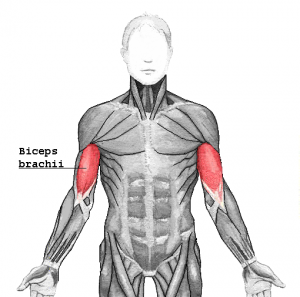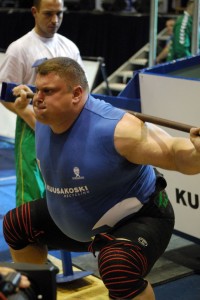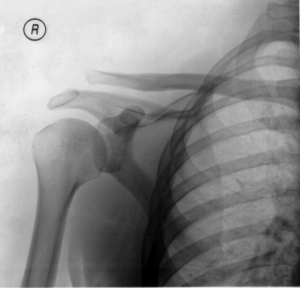Tendonitis of the Long Head of the Biceps
Overview of Tendonitis of the Long Head of the Biceps
Tendonitis occurs in different parts of the body that have tendons. Hence, tendonitis of the long head of the biceps affects the tendons connected to this particular section of the body. Any type of tendonitis is an inflammation which may be caused by a number of factors including injury or disease. The long head of the biceps are also referred to as the upper bicep tendons and when these tendons become irritated or inflamed, tendonitis is said to be present in the tendons.

Similar to the long head of the biceps tendon, there is also the short head of the bicep tendon which helps to hold up the bicep muscles and connect the upper arm to the shoulder region. The exact function of the tendon in the biceps may remain incompletely defined (Patton and McCluskey, 2001), however the upper arm bone which is known as the humerus is an important part of the shoulder joint. Hence, injury or inflammation to the tendons associated with this bone is easily noticeable. In addition to helping the shoulder joint function, the muscles connected to the long head of the bicep tendons help a person bend or fold their arms. The muscles at the upper arm are also responsible for allowing the elbow turn or rotate around the elbow joint.
Causes and Symptoms of Long Head of the Biceps Tendonitis
Causes of tendonitis of the long head of the biceps include the presence of inflammation or injury in the shoulder or surrounding areas of the bicep tendon. Existing inflammation that is not treated has the tendency of spreading to other unaffected areas. Hence, shoulder tendonitis, rotator cuff issues or other injuries associated with the shoulder could lead to the long head of the bicep tendon also becoming irritated and inflamed. For instance, if the rotator cuff tendons are weak and irritated, this area may not be able to function normally and may then shift some of load or weight-bearing responsibilities to the long head of the bicep tendons, which in turn become irritated and damaged.

Aging and athletic activities requiring overhead motion may also cause this type of tendonitis (Churgay, 2009). Another cause of long head of the bicep tendonitis is arthritis, which is simply another kind of inflammation that can affect any tendon in the body. Bicep tendon arthritis pain can occur when the joint around the tendon is moved and in some cases, there may be dull throbbing pain that exists even without the joints being moved. This is due to the inflammation that exists within the tendons and can still be painful when the shoulder or arm is at rest.
Other conditions that create instability within the shoulder, not limited to traumatic injury or accidents, could also create episodes of tendonitis in the long head of the bicep tendons. The condition can develop over time and also become progressively worse. A symptom of long head of the biceps tendonitis is pain from the front of the shoulder area. When tendonitis first occurs, the tendons may take on a red or sore look. Swelling of the tendon is also possible and although the color and size of the bicep tendons may not be visible outwardly or outside the body, the person suffering from tendonitis of the long head of the biceps may notice a slight throbbing, thickening, tightness or stretching sensation around the upper arm bicep region.
If left untreated, the condition may develop into more inflammation that could spread to surrounding areas of the body. The continuous stretching or swelling of the tendon may also generate more wear and tear on the tendon and could result in tears or cuts along the tendon. This could be seen outside the body in the form of a tendon bulging towards the skin.
Treatments for Tendonitis of the Long Head of the Biceps
Tenderness and pain or discomfort associated with tendonitis of the long head of the bicep tendon may be treated after a doctor has examined the shoulder region and confirmed the diagnosis of tendonitis. There are physical exams that qualified medical personnel can use to determine the presence of injury or inflammation. Determining the extent of the injury is also another factor that may affect the type of treatment necessary to alleviate the presence of the condition and its related symptoms. The history of the symptoms from tendonitis such as how the pain occurs or moves through the body can help pinpoint the source of the pain. Evidence of shoulder instability may further confirm a diagnosis of tendonitis of the long head of the bicep.

Improper diagnosis could lead to an improper treatment path. Hence, in some circumstances, additional tests including an ultrasound, Magnetic Resonance Imaging (MRI) tests and x-rays may be used to acquire a better visual of what may be occurring within the body and soft tissues related to the bicep tendons.
A popular recommended treatment plan for bicep tendonitis is application of ice packs on the affected area that can help reduce the swelling and pain. This cold therapy treatment may need to be repeated several times or as often as pain surfaces. It is also recommended that the person with the condition minimizes or eliminates activities that may aggravate the condition. Rest is another treatment option which could keep the affected arm and shoulder immobile and able to recover, depending on the degree of injury or inflammation present. Other non-surgical methods used in treating tendonitis of the long head of the bicep include physical therapy for the region. When done properly, physical therapy can gradually build up muscle tone and strength to the affected area.
There are over-the-counter pain medications that could be beneficial. Also, non-steroidal anti-inflammatory medication is designed to effectively target the areas of inflammation and reduce the soreness or swelling. If non-surgical methods fails or the tendonitis injury is too severe, surgery is another option that may be recommended by a doctor.
Rick Kaselj, MS
.



